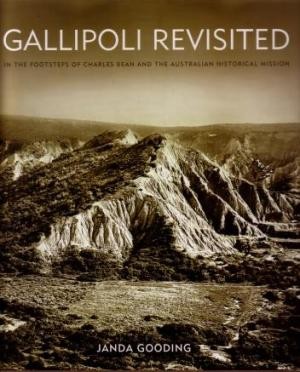First Edition, pp. 236 illusts #1118 The landing at Gallipoli has long been described as the moment that Australia proved itself as a nation; in the years since the ill fated battle, the world Gallipoli has become synonymous with bravery, courage, and the Australian spirit. But how is it that we know so much about this famous battle, and how is it that so many artifacts survive today, telling their story in museums all over Australia? For the main part, it’s thanks to famous Australian war correspondent and historian Charles Bean. C. E. W. Bean’s correspondence from WWI made him a household name amongst Australians. Less known is the role he played the establishment of Australian War Memorial. Even while working as the official war correspondent during the 1915 Gallipoli campaign, he began collecting records, artifacts and soldiers’ stories, with the aim of someday establishing Australia’s first national war museum. In 1919 Bean had the opportunity to return to Gallipoli to fill in the missing pieces of what happened during the campaign. He brought together a team of artists to accompany him on what he called the Australian Historical Mission. Their aim was to collect battlefield relics and create new artworks to convey the full story of the power, trauma, and tragedy of that terrible conflict. This book shares the story of the Australian Historical Mission for the first time, tracing the steps from its formation through to their work in Gallipoli and the journey home again. Interwoven throughout is a thought-provoking exploration of the connections between art, landscape and history, and their lasting impact on the way Australians remember the 1915 ANZAC campaign as well as the beginnings of the Australian War Museum and the ANZAC legend itself.
Gallipoli Revisited : In the Footsteps of Charles Bean and the Australian Historical Mission
$30.00
Sold Out
Additional Information
| Author | Janda Gooding |
|---|---|
| Publisher | Hardie Grant Books, Melbourne |
| Year Published | 2009 |
| Book Condition | FINE |
|---|---|
| Binding Type | Hardcover in Dustjacket |
